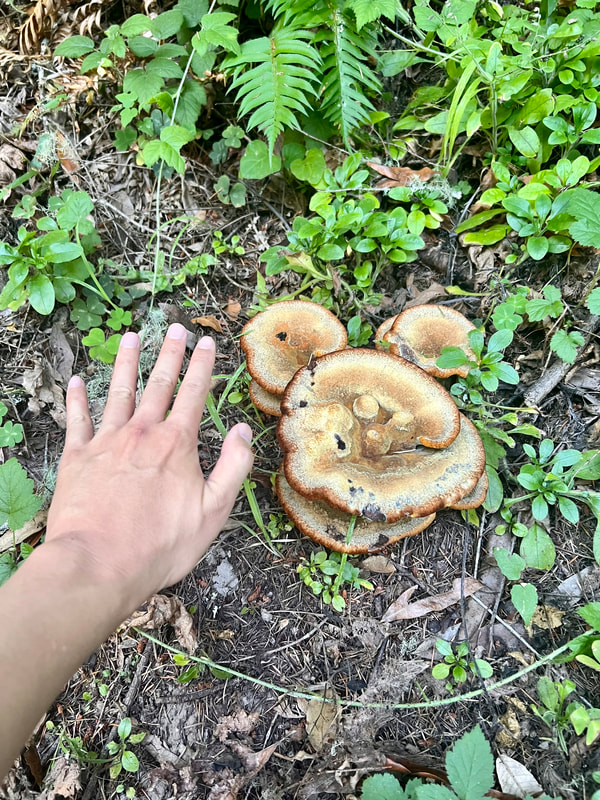|
Nature is undeniably beautiful, and the sense of awe we experience when we witness a stunning natural scene is universal. As a nature enthusiast, I strive to immerse myself in the natural world on a weekly basis. Since the onset of the pandemic, working from home has often confined me indoors for days. To counter this, I make it a point to embark on a long hike every Sunday. When I’m in nature, I feel fantastic, as if it's where I truly belong. Beyond the joy of nature's beauty, I believe there are numerous benefits to being in nature, some of which might surprise you. Personally, I used to get sick at least once a year before the pandemic, but since then, I haven’t been ill once. While it’s true that I’ve had less contact with people, I have still attended social gatherings, including with those who were sick with COVID. I suspect my frequent time in nature has contributed to my improved mental and physical state. I must disclose that I am neither a scientist nor a researcher. My understanding comes from personal experiences and information gathered from sources like ChatGPT and online research. Therefore, I encourage you to conduct your own research on this topic. My goal is to spark curiosity and encourage further exploration, ideally attracting the attention of researchers and scientists who can provide deeper insights. Let’s start with some well known and scientific proven benefits you may have already known. Part 1. Physical Health Benefits
Mental Health Benefits
Spiritual and Emotional Benefits
Cognitive and Developmental Benefits
Social Benefits
Environmental Awareness
Let’s now elaborate on some of these benefits and explore other potential advantages. While some of these benefits require further research, I encourage researchers and scientists to delve deeper into this field. If you haven't considered these benefits before, I urge you to explore them for the sake of all of us!  Beautiful dandeliones with unique geometric shapes. Sierra Azul Preserve, San Jose, California, USA Beautiful dandeliones with unique geometric shapes. Sierra Azul Preserve, San Jose, California, USA Part 2. Can Nature Help Us Access Our Superconscious? As mentioned above, there are undeniable mental health and cognitive benefits to spending time in nature. One intriguing potential benefit worth exploring is the idea of accessing your superconscious. Imagine performing at your highest level, entering the "zone" or flow state like top athletes, renowned artists, or groundbreaking scientists. What do Steph Curry's 3-pointers, Martin Luther King's "I Have a Dream" speech, Leonardo DiCaprio's Academy Award-winning performance in The Revenant, Leonardo da Vinci's "The Proportions of the Human Figure," and Albert Einstein's theories of relativity all have in common? They all tapped into the superconscious state at some point. Brainwaves: A Brief Overview Brainwaves are electrical impulses in the brain, generated by the synchronized activity of neurons communicating with each other. These impulses can be measured using electroencephalography (EEG) and are categorized into different frequency bands, each associated with specific mental states and activities. Here are the primary types of brainwaves:
These brainwaves reflect the brain's electrical activity and provide insights into a person's mental state and neurological function. While we naturally experience these brainwaves daily, accessing the higher frequency Gamma waves, associated with the superconscious state, is not easy. This state is linked to the highest cognitive functioning and consciousness and is typically experienced by advanced meditators. However, even without being masters of meditation, we can occasionally enter this state, often during moments of intense focus and relaxation. Characteristics of Gamma Brainwaves Gamma brainwaves are the fastest brainwaves and are associated with several cognitive and mental functions. Here are the key characteristics:
Research indicates that gamma wave activity can be enhanced through meditation, mindfulness practices, and cognitive exercises, potentially leading to improved mental clarity and emotional stability. Frequency Resonance and Nature Why is this important in the context of being in nature? How do you feel after spending 30-40 minutes in nature? Initially, you might still be distracted by daily concerns, but after some time, you start to relax and forget about work and worries. This immersion in nature occurs because natural frequencies can resonate with our brainwaves, creating positive effects. Frequency Resonance Frequency resonance occurs when an external force drives a system at a frequency matching the system's natural frequency, amplifying the system's oscillations. In the context of brainwaves and sound, resonance can enhance or alter brainwave patterns when external sound frequencies match the brain's natural frequencies. Key Concepts:
Practicing Mindfulness in Nature When we are relaxed, we tend to be in the Alpha or Theta state, which is the goal of meditation. Nature naturally induces this state, allowing for a meditative experience. To transition from Alpha or Theta to Gamma, you need to focus and concentrate. The gamma state requires active engagement in a subject matter, helping you stay focused and increasing your chances of reaching this state. In addition, I believe enbracing curousity can be one of our sources for happiness and joy. Here's a technique to practice: Mindful Contemplation in Nature:
Personal Hiking Experiences During one of my hikes, I observed a colony of ants marching in a line. Initially, it seemed like a simple natural behavior, and I thought ants had a lower perceptive ability than humans. However, as I contemplated further, I realized that ants' perception of the world is vastly different from ours. Their sensory experiences, interactions, and the way they navigate their environment are unique. This realization expanded my understanding of perception and helped me see the world in a humble way and through a broader lens. On another hike, I found myself staring at a bush for over an hour. I was captivated by the small butterflies and bees pollinating the flowers, the intricate geometric shapes of dandelions, and the diverse species of plants within the bush. This deep observation led me to appreciate the complexity and beauty of our natural world. It felt like I was in a superior virtual reality, more immersive and real than any technology could offer. At the same time, I suddenly understood why Moses might have perceived God through the burning bush. It wasn't that the bush or the fire was extraordinary, but rather that Moses' perception of reality had shifted in that moment. This insight helped me understand that profound experiences often come from changes in our perception rather than external events. These experiences have shown me that mindful contemplation in nature can lead to powerful insights and a deeper connection with the world around us. Just about every time I go hiking, I return with new understandings that help me improve various aspects of my life. Consequently, mindfulness combined with contemplation can enhance your experience in nature and allow you to access your superconscious gamma brainwave. If you'd like to learn more about brainwaves and other ways to access your superconscious, stay tuned for my next post on this subject. Part 3. Can different frequencies and vibrations in nature heal us at the cellular, molecular, and DNA level? “If you want to find the secrets of the universe, think in terms of energy, frequency, and vibration.” - Nikola Tesla By now, we recognize the benefits of organic foods due to their reduced chemical content. But what about sound? Nature produces some of the most beautiful and soothing sounds, often surpassing man-made noises. For instance, how often have you felt rejuvenated by the sound of flowing water, the wind rustling through leaves, or birds chirping while on a hike? These natural sounds contrast sharply with the often harsh noises of urban life, such as traffic and loud music. Beyond providing relaxation, there may be significant benefits to sound healing worth exploring. Sound Healing and Frequency: Sound healing, or sound therapy, is a practice that utilizes sound vibrations to improve mental, emotional, and physical health. This ancient technique, found in many cultures, aims to create harmony and balance within the body and mind. Although not widely accepted in mainstream science, there is some documented evidence supporting its efficacy. Here are some aspects worth exploring: Frequency and Vibrations:
The study of how frequencies and vibrations affect cells, molecules, and DNA is an area of growing scientific interest. This research spans various fields, including biophysics, molecular biology, and medicine. Here are some of the potential benefits at Cellular, Molecular, and DNA Levels, Cellular Benefits:
Here are some additional key concepts and case studies: Key Concepts: Mechanotransduction: Mechanotransduction is the process by which cells convert mechanical stimuli into biochemical signals. Cells respond to mechanical forces, which can influence cellular functions, gene expression, and even cell differentiation. Resonance Frequency: Every molecule or cellular structure has a natural resonance frequency. When subjected to vibrations at these frequencies, they can exhibit changes in behavior or function. Ultrasound and Acoustic Waves: Ultrasound waves, which are high-frequency sound waves, are used in medical diagnostics and therapies. They can penetrate tissues and influence cellular processes. Electromagnetic Fields (EMFs): EMFs at various frequencies can affect biological tissues. Low-frequency EMFs are used in some therapeutic devices, while high-frequency EMFs are used in imaging technologies like MRI. Case Studies: Pulsed Electromagnetic Fields (PEMF) Therapy: Study: A study published in Bioelectromagnetics examined the effects of PEMF therapy on cartilage repair in animals. The therapy promoted cartilage regeneration and reduced inflammation. Findings: PEMF can stimulate cellular repair processes, likely through enhancing cellular signaling pathways involved in growth and healing. The beneficial effects were observed at frequencies typically around 15 Hz to 20 Hz. These frequencies were found to enhance cellular repair processes and reduce inflammation. Ultrasound in Wound Healing: Study: Research published in Ultrasound in Medicine & Biology explored the use of low-intensity pulsed ultrasound (LIPUS) on wound healing. Findings: LIPUS was found to accelerate wound healing by promoting cell proliferation and collagen deposition. It also increased the expression of growth factors essential for tissue repair. Effective frequencies for accelerating wound healing were in the range of 1 to 3 MHz. This range promoted cell proliferation and collagen deposition, crucial for tissue repair. Effects of Acoustic Waves on DNA: Study: A study published in Scientific Reports investigated the impact of sound waves on DNA integrity and repair mechanisms. Findings: Exposure to specific acoustic frequencies could enhance DNA repair mechanisms in cells, suggesting potential applications in treating genetic disorders or improving cellular health. Specific acoustic frequencies around 1 kHz to 100 kHz were found to enhance DNA repair mechanisms. The precise optimal frequency within this range can vary depending on the cell type and the extent of DNA damage. Mechanotransduction in Stem Cell Differentiation: Study: Research in Nature Materials examined how mechanical forces influence stem cell differentiation. Findings: Mechanical vibrations at certain frequencies could direct stem cells to differentiate into specific cell types. This has implications for tissue engineering and regenerative medicine. Frequencies around 0.1 to 10 Hz were shown to direct stem cells to differentiate into specific cell types. Lower frequencies were generally more effective in promoting differentiation into osteogenic (bone) cells, while higher frequencies influenced differentiation into chondrogenic (cartilage) cells. Low-Frequency Electromagnetic Fields and Cancer Cells: Study: A study in International Journal of Radiation Biology explored the effects of low-frequency electromagnetic fields on cancer cells. Findings: Specific frequencies were found to inhibit the proliferation of certain cancer cells, potentially offering a non-invasive treatment modality. Frequencies in the range of 50 to 60 Hz were found to inhibit the proliferation of certain cancer cells. These frequencies interfered with cellular division processes and induced apoptosis (programmed cell death) in the cancer cells. Mechanisms of Action: Calcium Signaling: Vibrations and EMFs can influence calcium ion channels in cell membranes, altering intracellular calcium levels. This affects various cellular functions, including muscle contraction, neurotransmitter release, and cell proliferation. Frequencies in the range of 0.1 Hz to 10 Hz have been shown to influence calcium ion channels, thereby affecting various cellular functions. Gene Expression: Mechanical and electromagnetic stimuli can alter gene expression patterns. This can influence cell behavior, including growth, differentiation, and stress responses. Frequencies from 1 Hz to 50 Hz have been observed to alter gene expression patterns, influencing cell growth and differentiation. Cell Membrane Permeability: Vibrations can affect the permeability of cell membranes, impacting the transport of ions and molecules into and out of cells. Protein Folding and Function: Mechanical forces can influence the folding and function of proteins, affecting enzymatic activities and structural integrity. Resonance Frequency: Each biological structure has a unique resonance frequency. Applying mechanical or electromagnetic stimuli at or near these resonance frequencies can maximize the biological effects. Frequency Modulation: The modulation of frequency, such as pulsing patterns in PEMF, can also significantly affect the outcomes. Specific pulse durations and intervals are optimized for different therapeutic purposes. The observable effects of frequencies and vibrations on cells, molecules, and DNA are supported by a growing body of research. These studies demonstrate that specific frequencies and mechanical stimuli can influence cellular processes, promote healing, and potentially offer therapeutic benefits. While the mechanisms are complex and not fully understood, the evidence points to significant biological impacts, paving the way for innovative treatments and technologies. Nature is rich with various frequencies produced by natural phenomena and living organisms. These frequencies can have a range of beneficial effects on humans, particularly at the cellular, molecular, and DNA levels. Below is an overview of different natural frequencies and their potential benefits. Water Flowing Frequency Range: 50 Hz to 500 Hz Examples: Streams, rivers, ocean waves Benefits: The sound of flowing water is known to have a calming effect on the human nervous system. It can reduce stress and promote relaxation, potentially aiding in cellular repair and reducing inflammation. The rhythmic sound can also improve sleep quality and support mental well-being. Wind Blowing Frequency Range: 20 Hz to 500 Hz Examples: Gentle breeze, strong winds through trees Benefits: The sound of wind can enhance relaxation and meditative states, supporting mental clarity and stress reduction. The gentle rustling of leaves and wind through trees can promote a sense of tranquility and connection to nature. Insects Crickets: Frequency: 2 kHz to 6 kHz Benefits: The rhythmic chirping of crickets can have a soothing effect, promoting relaxation and reducing anxiety. Bees: Frequency: Around 250 Hz Benefits: The buzzing of bees is associated with a phenomenon called the "buzz pollination" effect, which can promote a sense of calm and enhance focus. Birds: Songbirds: Frequency: 1 kHz to 8 kHz Benefits: Birdsong can enhance mood, reduce stress, and improve cognitive functions. The complex melodies and rhythms can stimulate the brain, promoting relaxation and mental clarity. Owls: Frequency: 200 Hz to 2 kHz Benefits: The hooting of owls can create a sense of peacefulness and connection to nature, aiding in stress reduction and promoting a meditative state. Animals: Whales: Frequency: 10 Hz to 31 kHz (depending on species) Benefits: Whale songs and calls can promote deep relaxation and have been studied for their potential therapeutic effects on mental health. Frogs: Frequency: 100 Hz to 4 kHz Benefits: The croaking of frogs is often associated with a calming, natural ambiance, which can reduce stress and promote a sense of well-being. Here are also some well known frequencies that are believed to have certain beneficial effects in some specific aspects of our mind, body, and spirit. They are called Solfeggio frequencies. Natural Sources and Healing Frequencies: 1. 174 Hz (Pain Reduction): - Natural Source: Low-frequency sounds like deep wind resonances or distant thunder. - Effect: This frequency is believed to alleviate physical pain and is sometimes associated with the deep, grounding sounds of nature like low rumbles or waves. 2. 285 Hz (Cellular Repair, Body Regeneration, Immunity): - Natural Source: Similar to the gentle hum of bees or the background drone of insects. - Effect: This frequency is associated with tissue regeneration and cellular repair, mirroring the rejuvenating hums found in nature. 3. 396 Hz (Liberating from Guilt and Fear): - Natural Source: Lower bird calls or the soft rustling of leaves. - Effect: This frequency is thought to help release fear and guilt, akin to the calming and reassuring sounds of nature. 4. 417 Hz (Undoing Situations and Facilitating Change): - Natural Source: Water streams or the flowing of a creek. - Effect: Associated with change and new beginnings, similar to the fluid and transformative sounds of flowing water. 5. 528 Hz (DNA Repair, Transformation): - Natural Source: Higher bird songs. - Effect: Known for its transformative and DNA repairing properties, paralleling the uplifting and harmonizing sounds of certain bird calls. 6. 639 Hz (Improving Relationships): - Natural Source: Harmonious bird songs and gentle breezes. - Effect: This frequency promotes harmony in relationships, akin to the cooperative and communicative sounds in nature. 7. 741 Hz (Expression and Solutions): - Natural Source: Wind through trees or chirping insects. - Effect: Helps with problem-solving and expression, similar to the clear and concise sounds of nature's communicators. 8. 852 Hz (Returning to Spiritual Order): - Natural Source: High-pitched bird calls or the sound of the wind in higher frequencies. - Effect: This frequency enhances intuition and spiritual order, reflected in the pure and high tones found in nature. 9. 963 Hz (Spiritual Awakening, Oneness): - Natural Source: The sound of a quiet, serene forest or a calm sea. - Effect: Associated with spiritual awakening and connecting to the universe, similar to the deeply peaceful and expansive sounds in nature. In addition, earth’s frequency, often referred to as the Schumann resonance, is approximately 7.83 Hz. This is thought to be the “heartbeat” of the planet. There is ongoing research into the potential health benefits of being in harmony with the Earth’s frequencies. Some alternative medicine practitioners advocate for exposure to the 7.83 Hz frequency to reduce stress and enhance overall well-being. As part of nature, humans exhibit a range of frequencies and vibrations across different physiological and psychological processes. These include brainwaves, heart rhythms, and cellular activities. From a scientific perspective, emotions influence physiological states, and these changes can be measured in various ways, such as: Heart rate variability: Positive emotions can lead to more coherent heart rhythms, while negative emotions can lead to more erratic heart rhythms. Brain activity: Different emotions are associated with different patterns of brain activity, measurable by EEG (electroencephalography). Hormonal changes: Emotions can trigger the release of various hormones, like cortisol during stress or endorphins during happiness. Frequency Interference: While it’s true that certain frequencies can cancel each other out (destructive interference), this phenomenon typically requires precise conditions and is more relevant in controlled environments than in the diverse and dynamic settings found in nature. In natural environments, the complex mix of frequencies generally doesn’t lead to significant cancellation but instead creates a rich tapestry of sound. Part 4. Can simply breathing in nature improve our health? If you're like me, you revel in the diverse scents of nature, from the invigorating aroma of the beach to the earthy smell of the forest. There's something uniquely refreshing about breathing in this natural air, which not only fills your lungs but also rejuvenates your spirit. I believe there are numerous health benefits embedded in these natural scents. Here’s a deeper look at how inhaling volatile organic compounds (VOCs) and essential oils from plants can impact our health at cellular, molecular, and DNA levels: 1. Cellular Effects:
Specific Examples:
Inhaling VOCs and essential oils from plants not only provides immediate sensory and psychological benefits but also triggers a series of positive effects at the cellular, molecular, and DNA levels. These interactions can boost immune function, reduce inflammation, protect against oxidative stress, and influence genetic expression, promoting overall health and well-being. If you're a runner, consider running through the forest to inhale more of these beneficial compounds and enhance your health. Part 5. Can Physical Contact With Nature Potentially Benefit Our Health? When interacting with nature, we often physically touch natural elements like soil, plants, and trees. Here’s how this contact might benefit our health: Microbiome Diversity: Contact with soil introduces a variety of microorganisms to the body, potentially increasing microbiome diversity. A diverse microbiome is linked to a stronger immune system and reduced inflammation. Grounding or Earthing: Walking barefoot on natural surfaces like grass, soil, or sand helps balance the body's electrical charges. Studies suggest that grounding may reduce inflammation, improve sleep, and enhance overall well-being. So, when your children play in the dirt, embrace their contact with nature. It’s beneficial for their health! Spending time in nature has numerous health benefits, and engaging with the natural environment can enhance both personal well-being and environmental health. For those looking to integrate nature into their routine, consider taking advantage of opportunities to breathe in natural air and physically connect with nature. A recent study published in Scientific Reports found that spending just 120 minutes a week in nature can have significant health benefits. You don't have to do it all at once—small, regular doses of nature can be highly effective. Part 6. How We Benefit Nature by Spending Time in It. We have talked a lot about how nature benefits us, but what about how we benefit nature by spending more time in nature? Humans can positively impact nature through their interactions in several ways, contributing to the preservation and enhancement of natural environments. Here are some key benefits of humans spending time in nature: Conservation Efforts
Scientific Research and Citizen Science
Sustainable Practices and Education
Economic Support for Conservation
Cultural and Spiritual Connections
Positive Feedback Loops
By spending time in natural environments, we contribute positively to the health and sustainability of ecosystems. Through conservation efforts, scientific research, sustainable practices, economic support, cultural connections, and fostering environmental stewardship, we create a reciprocal relationship that benefits both humans and the natural world. As a reminder, consider the impact of your actions on the environment, recognizing that the creatures and ecosystems we interact with may also play a role in our well-being. Part 7. Practical Tips for Integrating Nature into Your Life
Sometimes, I share my writings alongside images from some of my favorite hikes and travels in various places across the US and beyond. If you find a particular photo intriguing, feel free to look them up for inspiration. Conclusion Our intricate relationship with nature profoundly influences both our personal well-being and the health of our environment. By understanding how nature impacts us and how we can positively affect nature, we embrace a holistic view of this interconnectedness. Breathing in the fresh air of natural environments offers numerous health benefits, thanks to the inhalation of volatile organic compounds (VOCs) and essential oils from plants. These compounds exert effects at the cellular, molecular, and DNA levels, contributing to immune system modulation, anti-inflammatory effects, and antioxidant protection. Phytoncides from pine trees and linalool from lavender are just a few examples of how nature's aromas enhance our health by promoting relaxation, reducing inflammation, and safeguarding our DNA. Physical contact with nature, such as walking barefoot or touching soil, enriches our health by supporting microbiome diversity and potentially balancing our body's electromagnetic charges. These interactions not only improve physical health but also inspire a more sustainable and mindful lifestyle. The impact of natural frequencies and vibrations further highlights nature's influence on our well-being. Vibrations from flowing water, wind, and animal sounds, as well as specific frequencies like the Solfeggio frequencies, can affect our physical and emotional states. These frequencies interact with our body's cells, proteins, and DNA, influencing healing processes, mood, and cognitive functions. By tuning into these natural rhythms, we align ourselves with nature’s inherent harmonics, enhancing our overall health. Accessing the superconscious through nature—whether through meditative practices, mindfulness, or simply being present in natural settings—can lead to profound personal insights and spiritual growth. Nature provides a backdrop for transcending ordinary consciousness and connecting with deeper aspects of our being, facilitating a sense of oneness and higher understanding. In addition to personal benefits, our interactions with nature yield positive impacts on the environment. Spending time outdoors often leads to increased awareness and advocacy for conservation efforts, participation in scientific research, and the adoption of sustainable practices. Engaging in eco-tourism and supporting local economies contribute to preserving natural habitats and cultural practices. By fostering environmental stewardship and community, we create a positive feedback loop that benefits both nature and ourselves. To integrate nature into your life, consider incorporating practices such as daily walks, weekend adventures, mindful outdoor exercises, solitude in nature, silent walk/hike. Volunteering for conservation projects and participating in community clean-up efforts further strengthen your connection to the environment. As we continue to uncover the profound connections between nature and human health, it is crucial to encourage further scientific inquiry. Researchers and scientists are invited to delve deeper into the effects of natural compounds, frequencies, and vibrations on our well-being, as well as the broader environmental impacts of our interactions with nature. Such exploration could unlock new dimensions of understanding and enhance our ability to harmonize with the natural world. In essence, our relationship with nature is one of mutual enrichment. By embracing nature's health benefits, respecting its frequencies, and accessing deeper consciousness, we foster a healthier, more sustainable world. Let nature’s rhythms enhance your well-being while you actively support its vitality. Breathe deeply, step outside, and recognize that each interaction with nature not only improves your own health but also plays a crucial role in nurturing the environment that sustains us all. - Feelasoulphy Additional resources and references: Part 1. Journal of Physical Activity and Health - Outdoor exercise benefits Sports Medicine - Muscle engagement in outdoor activities Environmental Health and Preventive Medicine - Immune function and forest bathing Journal of Clinical Sleep Medicine - Natural light and sleep quality Frontiers in Psychology - Nature and cortisol levels Environmental Science & Technology - Green exercise and mood improvement PLOS ONE - Nature and creativity Ecopsychology - Connection with the Earth Mindfulness - Nature and mindfulness practices Emotion - Awe and life satisfaction Psychological Science - Nature and cognitive function Children, Youth and Environments - Outdoor learning Journal of Leisure Research - Family leisure in natural settings Health & Place - Community engagement in natural environments Environmental Education Research - Environmental awareness Conservation Biology - Nature experiences and environmental stewardship Part 2. Sleep Medicine Clinics - EEG in sleep disorders Journal of Cognitive Neuroscience - Theta oscillations and meditation NeuroReport - Meditation and cortical thickness Frontiers in Psychology - Beta oscillations in working memory Trends in Neurosciences - Gamma oscillations significance Frontiers in Human Neuroscience - Gamma and cognitive processes Nature - Attention and gamma synchrony Brain Research Reviews - Gamma waves and memory International Journal of Psychophysiology - Gamma and consciousness Neuroscience Letters - Brain wave synchronization Proceedings of the National Academy of Sciences - Binaural beats influence Journal of Environmental Psychology - Nature sounds and brain waves Health & Place - Nature exposure effects Journal of Neuroscience - Gamma synchrony and cognitive processes Ecopsychology - Mindfulness and nature connection Psychological Research - Binaural beats and cognitive enhancement NeuroReport - Isochronic tones and cognitive performance Part 3. Additional resource on killing cancer cells with 100 khz-300 khz, https://youtube.com/watch?v=1w0_kazbb_U&si=CClFKxsrBeZ2NUnm Ulrich, R. S. (1984). "View through a window may influence recovery from surgery." Science, 224(4647), 420-421. Li, Q. et al. (2008). "Visiting a forest, but not a city, increases human natural killer activity and expression of anti-cancer proteins." International Journal of Immunopathology and Pharmacology, 21(1), 117-127. Chrousos, G. P. (2009). "Stress and disorders of the stress system." Nature Reviews Endocrinology, 5(7), 374-381. Deak, T., et al. (2005). "Effects of stress on immune function: the good, the bad, and the beautiful." Immunologic Research, 31(3), 205-216. Epel, E. S., et al. (2004). "Accelerated telomere shortening in response to life stress." Proceedings of the National Academy of Sciences, 101(49), 17312-17315. Meaney, M. J. (2010). "Epigenetics and the biological definition of gene x environment interactions." Child Development, 81(1), 41-79. Ingber, D. E. (2003). "Tensegrity I. Cell structure and hierarchical systems biology." Journal of Cell Science, 116(7), 1157-1173. Vogel, V. and Sheetz, M. (2006). "Local force and geometry sensing regulate cell functions." Nature Reviews Molecular Cell Biology, 7(4), 265-275. Enwemeka, C. S., et al. (2009). "The efficacy of low-intensity therapeutic ultrasound in the treatment of chronic lower extremity wounds: a meta-analysis." Journal of Orthopaedic & Sports Physical Therapy, 39(3), 160-171. Reher, P., et al. (1998). "The stimulation of bone formation in vitro by therapeutic ultrasound." Ultrasound in Medicine & Biology, 24(8), 1255-1260. Pagliaro, A. and Taylor, D. L. (1988). "Rapid separation of subcellular organelles using a low-speed, high-resolution density gradient technique." Journal of Cell Biology, 107(2), 981-991. Felsenfeld, G. and Groudine, M. (2003). "Controlling the double helix." Nature, 421(6921), 448-453. Discher, D. E., et al. (2009). "Matrix elasticity directs stem cell lineage specification." Science, 324(5935), 1673-1677. Engler, A. J., et al. (2006). "Matrix elasticity directs stem cell lineage specification." Cell, 126, 677-689. Part 4. Li, Q., et al. (2006). "Forest bathing enhances human natural killer activity and expression of anti-cancer proteins." International Journal of Immunopathology and Pharmacology, 19(4), 951-959. Loizzo, M. R., et al. (2008). "The effects of inhaled essential oils on pain and inflammation: a review." Journal of Ethnopharmacology, 115(3), 513-520. Tisserand, R., & Young, R. (2013). Essential Oil Safety: A Guide for Health Care Professionals. Elsevier Health Sciences. Buchbauer, G. (2010). "Biological activities of essential oils: an update." Handbook of Essential Oils: Science, Technology, and Applications. CRC Press. Moss, M., et al. (2010). "Modulation of cognitive performance and mood by aromas of peppermint and ylang-ylang." International Journal of Neuroscience, 118(1), 59-77. Su, Y., et al. (2010). "Essential oil of rosemary and its principal component, 1,8-cineole, have anti-inflammatory and antinociceptive activities in a rat model of chronic inflammatory pain." Journal of Pain Research, 3, 157-163. Chao, L. K., et al. (2008). "Anti-inflammatory bioactivities of essential oils from Taiwanese indigenous plants." Food and Chemical Toxicology, 46(12), 4309-4315. Zaveri, N. T. (2006). "Green tea and its polyphenolic catechins: medicinal uses in cancer and noncancer applications." Life Sciences, 78(18), 2073-2080. Lin, R., et al. (2009). "Neuroprotective effects of lavender oil on transient focal cerebral ischemia in mice." Experiments in Therapeutic Medicine, 1(6), 1039-1044. Cho, J., et al. (2003). "Neuroprotective and antioxidant effects of extracts from Lavandula angustifolia." Journal of Ethnopharmacology, 89(1), 155-160. Packer, L., & Cadenas, E. (2002). "Antioxidants and redox regulation of gene transcription." FASEB Journal, 16(7), 527-539. Kuo, C. T., et al. (2005). "Cognitive-enhancing and antioxidative effects of rosemary extract in aged rats." Journal of Medicinal Food, 8(2), 221-227. Li, X., et al. (2013). "Inhalation of essential oils from citrus unshiu peel reduces anxiety and improves antioxidant status in stressed mice." Journal of Agricultural and Food Chemistry, 61(11), 2596-2602. Dean, W., et al. (2010). "Alterations in DNA methylation associated with environment." Human Molecular Genetics, 19(R2), R204-R210. Sampson, J. H., et al. (2001). "In vitro anti-cancer activity of dietary phytochemicals: synergistic effects of curcumin, epigallocatechin gallate and other phytochemicals." Planta Medica, 67(8), 684-688. Part 5. Microbiome Diversity:
Conservation Efforts:
Daily Walks:
0 Comments
|
AuthorFeelasoulphy Categories
All
Archives
December 2024
|








 RSS Feed
RSS Feed